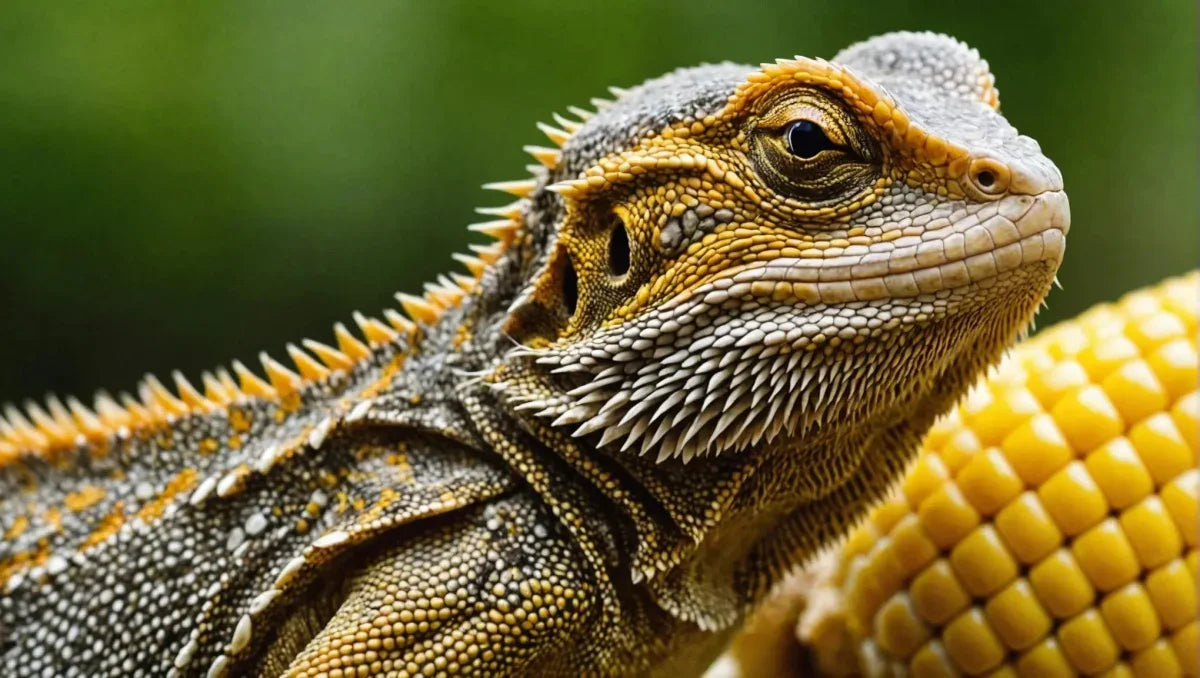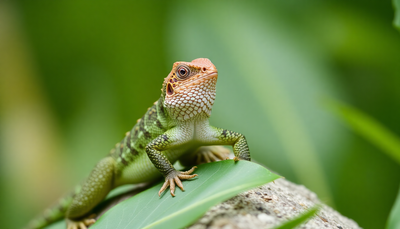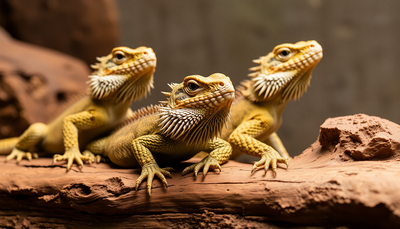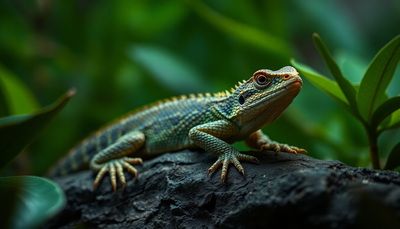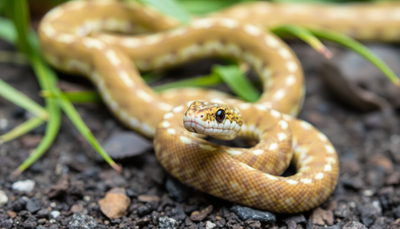Welcome to the comprehensive guide on caring for your pet bearded dragon and corn snake. Whether you're a seasoned reptile enthusiast or a new pet owner, understanding the proper care and maintenance of these unique creatures is crucial for their health and well-being. In this guide, we will explore the specific needs of bearded dragons and corn snakes, including their habitat requirements, feeding habits, and common health issues to watch out for. By following the tips and recommendations provided, you'll be equipped to create a safe and enriching environment for your beloved bearded dragon and corn snake. Get ready to embark on a rewarding journey of pet ownership filled with fascinating facts and practical advice to ensure your scaly companions thrive in your care.

Bearded Dragons: Your Lizard Companion
Physical Characteristics and Unique Traits of Bearded Dragons
Bearded dragons, scientifically known as Pogona, are fascinating reptiles that make wonderful pets. Their physical characteristics and unique traits set them apart from other lizard species. From their spiky appearance to their friendly demeanor, bearded dragons have captured the hearts of reptile enthusiasts worldwide.
One of the most distinctive features of bearded dragons is their 'beard,' a pouch located under their chin that puffs up when they feel threatened or excited. This behavior gives them their name and adds to their charm. Additionally, bearded dragons come in various colors, including shades of yellow, red, orange, and even white. Their scales have a rough texture, and some individuals display patterns that resemble a camouflage design.
Apart from their physical appearance, bearded dragons exhibit several unique traits that endear them to their owners. These reptiles are known for their docile nature, making them great companions for both novice and experienced reptile keepers. They have a curious personality and can recognize their owners, often showing affection by seeking attention or even 'waving' their arms. Bearded dragons are diurnal creatures, meaning they are most active during the day and require proper lighting and heating to thrive.
Setting Up the Perfect Enclosure for Your Bearded Dragon
Creating a suitable habitat is crucial for the health and well-being of your bearded dragon. When setting up their enclosure, also known as a vivarium or terrarium, several factors need to be considered to mimic their natural environment.
The size of the enclosure is essential to provide enough space for your bearded dragon to move around, bask under a heat lamp, and explore different areas. A secure lid is necessary to prevent escapes and protect your pet from potential hazards. The enclosure should include various elements, such as hiding spots, basking spots with a heat source, a water dish for drinking and soaking, and appropriate substrate for burrowing.
Maintaining the right temperature and humidity levels is critical for the health of your bearded dragon. A temperature gradient should be created within the enclosure, with one side warmer for basking and the other side cooler for resting. UVB lighting is essential for bearded dragons to metabolize calcium properly and prevent bone-related diseases.
Bearded dragons are not just fascinating creatures but also wonderful companions for those willing to provide them with proper care and attention. Understanding their physical characteristics, unique traits, and the importance of setting up an ideal enclosure are vital steps in ensuring a happy and healthy life for these beloved reptiles.
Blog Section: Caring for Your Bearded Dragon
Feeding Guidelines and Nutritional Needs for Bearded Dragons:
Bearded dragons require a balanced diet to thrive. Offer a variety of live insects such as crickets, dubia roaches, and mealworms, along with fresh vegetables like collard greens, bell peppers, and butternut squash. Dust the insects with calcium powder and provide a vitamin supplement to ensure all nutritional needs are met. Remember to remove any uneaten food to maintain cleanliness. Providing a shallow dish of water for drinking and misting the enclosure to maintain humidity are also essential aspects of their care.
Handling and Bonding Tips for a Happy Bearded Dragon:
Building a strong bond with your bearded dragon is essential for their well-being. When handling your pet, support their body properly and avoid sudden movements. Gradually increase handling time to help them get accustomed to human interaction. Spend quality time near their enclosure, talk to them softly, and offer treats by hand to strengthen your bond. Additionally, creating a stimulating environment with hiding spots, branches for climbing, and basking areas will promote mental and physical enrichment for your pet.
Healthcare Essentials and Common Issues for Bearded Dragons:
Creating a suitable habitat is crucial for the health of your bearded dragon. Provide a basking spot with a temperature gradient, UVB lighting, and a suitable substrate. Regularly check for signs of common health problems such as loss of appetite, lethargy, or abnormal stool. A yearly check-up with a reptile veterinarian is recommended to ensure your pet's well-being. Furthermore, maintaining proper hygiene in the enclosure, including regular spot cleaning and periodic deep cleaning, is important to prevent the buildup of harmful bacteria and parasites that could affect your pet's health.
Corn Snakes: The Slithering Companion
Introduction to Corn Snakes as Beginner-Friendly Pets
Corn snakes, also known as red rat snakes, are one of the most popular pet snake species amongst reptile enthusiasts. Their docile nature, ease of care, and beautiful color variations make them an ideal choice for beginner snake owners. In this blog section, we will delve into why corn snakes are considered great starter pets and explore the allure that these serpents hold for reptile keepers of all levels of experience.
Corn snakes originate from North America, primarily found in the southeastern and central United States. Their name comes from the pattern of their scales, resembling maize or Indian corn. These non-venomous constrictors are relatively small, with adults typically reaching lengths of 3 to 5 feet. Their manageable size makes them easy to handle and maintain, even for those new to snake keeping.
One of the most appealing aspects of corn snakes is their wide range of colors and patterns. Breeders have developed numerous morphs, resulting in variations like albino, snow, caramel, and more. This diversity in appearance has captivated snake enthusiasts, leading to a vibrant community dedicated to breeding and showcasing these captivating serpents.
In addition to their striking appearance, corn snakes have a gentle temperament, rarely showing aggression towards humans. Their calm demeanor and adaptability to captive environments make them an excellent choice for both children and adults looking to enter the world of snake ownership. Furthermore, their simple dietary needs, typically consisting of rodents, further enhance their appeal as low-maintenance pets.
Whether you are a seasoned reptile keeper or a novice enthusiast, the charm of corn snakes is undeniable. Their combination of beauty, ease of care, and agreeable disposition make them a slithering companion worth considering for anyone interested in the captivating world of pet snakes.
Understanding the Fascination with Keeping Corn Snakes
Corn snakes are known for their fascinating behavior in the wild and captivity. These snakes are excellent climbers and are often found basking in elevated positions in their habitats. Their curious nature and exploratory tendencies make them interesting to observe. Additionally, corn snakes are known for their burrowing habits, utilizing hides and substrate to create cozy retreats.
Another intriguing aspect of corn snakes is their shedding process. Like all snakes, corn snakes shed their skin periodically to accommodate growth. This process, known as ecdysis, involves the snake rubbing against rough surfaces to loosen the old skin before sloughing it off completely. Witnessing a corn snake shed can be a mesmerizing experience for snake enthusiasts.
Furthermore, corn snakes have unique reproductive behaviors. During the breeding season, male corn snakes engage in a ritualistic courtship dance to attract females. This intricate dance involves the male rubbing his chin on the female's body, creating a tactile and olfactory interaction that precedes mating. Understanding these behaviors adds another layer of intrigue to keeping corn snakes as pets.
Corn snakes offer a delightful blend of beauty, ease of care, and captivating behaviors that make them a rewarding choice for snake enthusiasts of all levels. Whether you are drawn to their stunning color variations, gentle temperament, or fascinating habits, these slithering companions have rightfully earned their place as beloved pets in the world of reptile keeping.
Corn Snake Care Guide
Corn snakes, scientifically known as. Pantherophis guttatus , are one of the most popular reptile pets globally. Their docile nature, manageable size, and striking color variations make them an attractive choice for both beginner and experienced reptile enthusiasts. However, like any other pet, Corn Snakes require dedicated care to thrive in captivity. In this comprehensive guide, we will delve into the essential aspects of Corn Snake care to ensure your scaly companion leads a healthy and fulfilling life.
Creating an Ideal Habitat for Your Corn Snake
Setting up the perfect enclosure is the first step in providing a conducive environment for your Corn Snake. Ensure the terrarium is escape-proof, adequately ventilated, and offers ample space for movement. Opt for a substrate that allows burrowing while maintaining cleanliness. Provide a temperature gradient (ranging from 75-85°F) and humidity levels between 40-60% to mimic their natural habitat. Include hiding spots and climbing branches to cater to their behavioral needs.
Nutritional Requirements and Feeding Schedule for Corn Snakes
Corn Snakes are carnivores, primarily feeding on rodents in the wild. When kept as pets, they thrive on a diet of appropriately sized mice or rats. It's crucial to offer prey items that are no wider than the snake's widest body part to prevent regurgitation. Feed juveniles every 5-7 days, while adults can be fed every 7-10 days. Supplement their diet with calcium and vitamins to prevent nutritional deficiencies.
Identifying and Addressing Common Health Problems in Corn Snakes
Despite being relatively hardy, Corn Snakes are susceptible to certain health issues. Shedding difficulties are common and can be alleviated by providing a humid hide. Respiratory infections, often caused by inadequate temperature or humidity, require prompt veterinary attention. Regular fecal exams help in detecting and treating parasitic infections. Scale rot, a bacterial infection, can be prevented by maintaining a clean and dry enclosure. Regular health check-ups are essential to catch any issues early.
By prioritizing these care essentials, you significantly contribute to your Corn Snake's well-being and longevity. Remember, each snake is unique, so observe their behavior and adjust care practices accordingly. Stay informed, stay vigilant, and enjoy the wonderful journey of caring for these captivating serpents!.
Choosing Between Bearded Dragons and Corn Snakes
Comparing Care Needs and Temperaments of Bearded Dragons vs. Corn Snakes
Bearded Dragons: 1. Housing Requirements: Terrarium size, lighting, and heating needs 2. Dietary Needs: Omnivorous diet, specific food items, and supplements 3. Handling and Temperament: Docile nature, ease of handling, and interaction.
Corn Snakes: 1. Housing Requirements: Enclosure size, temperature gradients, and hiding spots 2. Dietary Needs: Carnivorous diet, feeding frequency, and prey size 3. Handling and Temperament: Shy nature, minimal handling preference, and behavior.
Personal Considerations: 1. Space Availability: Consider the space needed for the enclosure 2. Time Commitment: Evaluate the time required for feeding, cleaning, and interaction 3. Activity Level: Determine the activity levels of both reptiles and your preference 4. Allergies: Consider any allergies to reptiles that may affect your choice.
When deciding between a Bearded Dragon and a Corn Snake as a pet, it's crucial to delve deeper into the nuances of their care requirements and temperaments. Bearded Dragons, known for their friendly demeanor and relatively easy care, thrive in properly set up terrariums equipped with suitable lighting and heating sources. Their omnivorous diet consisting of leafy greens, insects, and occasional fruits demands attention to nutritional balance and the provision of supplements.
On the other hand, Corn Snakes, while less interactive than Bearded Dragons, have their own charm with a shy yet curious personality. They require spacious enclosures with proper temperature gradients and hiding spots to feel secure in their environment. Their carnivorous diet, primarily comprising appropriately sized prey items, necessitates a feeding schedule that aligns with their natural hunting instincts.
Personal considerations play a significant role in determining the ideal reptile companion for you. Assess factors like space availability for the enclosure, the time commitment needed for daily care routines, the desired activity level of the pet, and any potential allergies that could influence your choice.
Ultimately, the decision between a Bearded Dragon and a Corn Snake hinges on your lifestyle, preferences, and commitment to providing the best care for your chosen pet. Conduct thorough research, consult with experienced reptile keepers, and consider visiting reptile expos or breeders to make an informed choice that ensures a fulfilling companionship with your new scaly friend.
Conclusion
Caring for a Bearded Dragon and Corn involves a combination of proper diet, habitat maintenance, and regular veterinary check-ups. By providing a nutritious diet, a suitable environment, and appropriate care, you can ensure the health and well-being of your beloved pets. Remember, responsible pet ownership entails dedication, knowledge, and love. So, be sure to prioritize the needs of your Bearded Dragon and Corn to enjoy a rewarding and fulfilling relationship with these fascinating animals.


